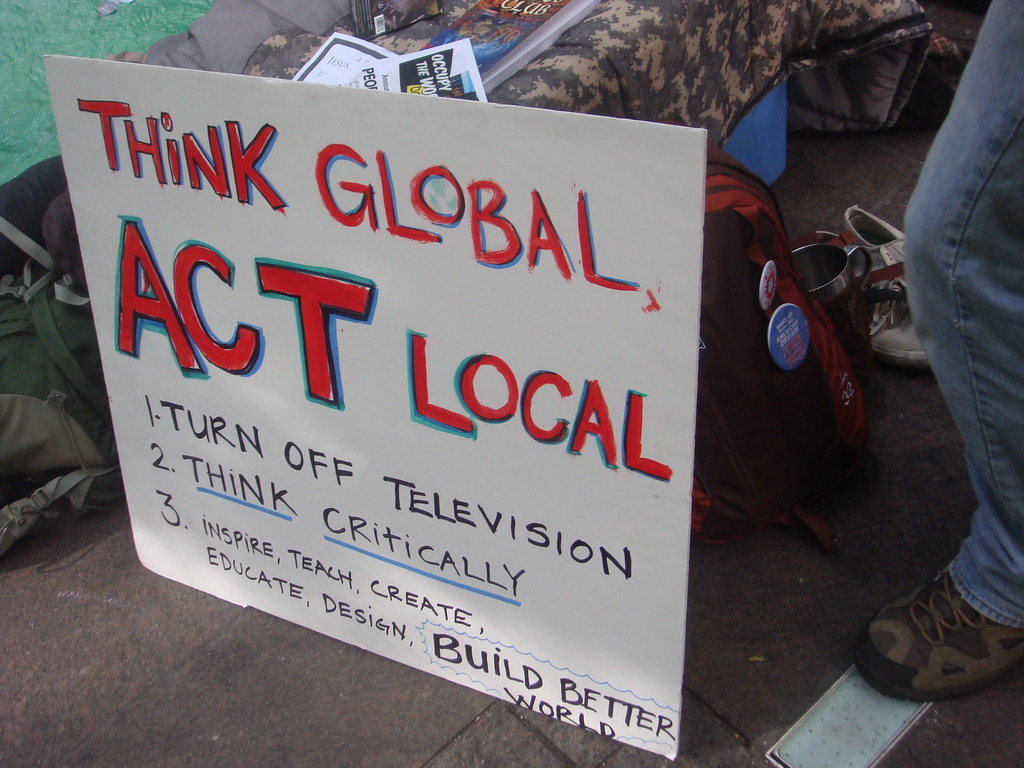What keeps me sane is the realization that the one place we can really have an impact is locally. Here in Tucson we may not be able change national policy, no matter who we vote for. It seems like we can't even affect decisions made 120 miles away in Phoenix. What we can do is implement change at the local level and hope that people will be inspired by our example. Change always comes from the bottom up, not top down. Think Global, Act Local.
What can we do locally? Advocate for better mass transit, bicycle and pedestrian safe streets, and put an end to this madness of building and widening more roads, which has the counter-intuitive effect of increasing the amount of traffic. In another bizarre irony, we face an uphill struggle to encourage more solar power here in sun-drenched Arizona.
One of the simplest things we can all do at the local level is to protect our water. Water is essential to all of us, and must be preserved - especially here in the desert southwest. Less than 1% of the world's water is fresh and accessible. There will inevitably be cuts to the Colorado River water that Tucson relies on for all of its water needs. Why wait for things to get bad? Watershed Management Group has a 50 year plan to restore our perennial river flows in the Santa Cruz basin. Did you know that our major rivers (and many of the streams that feed them) used to flow year round? Some of them still do, like this stretch of Sabino Creek.
Even farther downstream, the apparently dry streambed of Sabino Creek actually has running water just under the surface.

This is because the Sabino Creek and Tanque Verde watersheds are very shallow. As Catlow Shipek, Policy and Technical Director for Watershed Management Group, points out, those blue areas on the map of Tucson are shallow watersheds. We can raise the level of the water in those areas through some very simple steps that all of us can do.
You don't need to install an expensive cistern system to store rainwater or build a composting toilet (although you may be glad you did). Envision coal smoke coming out of the faucet every time you turn it on (since all of the CAP water we get here in Tucson is provided by one of the dirtiest coal-fired power plants in the nation) and you might find yourself running the tap far less often. We started by turning the shower off while we were soaping up or not running the water while brushing our teeth. We pour our clear sink rinse water on non-food plants in our garden. There are lots of simple ways to reduce water use. Any water we don't use is water that Tucson Water doesn't have to pump from our aquifer or import from the Colorado River.
Can you think of any water-saving habits you can incorporate into your everyday life? After that simple start, you may find yourself wanting to do more. You can enjoy the free Living Lab tour at Watershed Management Group and start thinking about other ways to save more water - like installing catchment basins or a laundry-to-landscape greywater system. You just have to start somewhere.





No comments:
Post a Comment